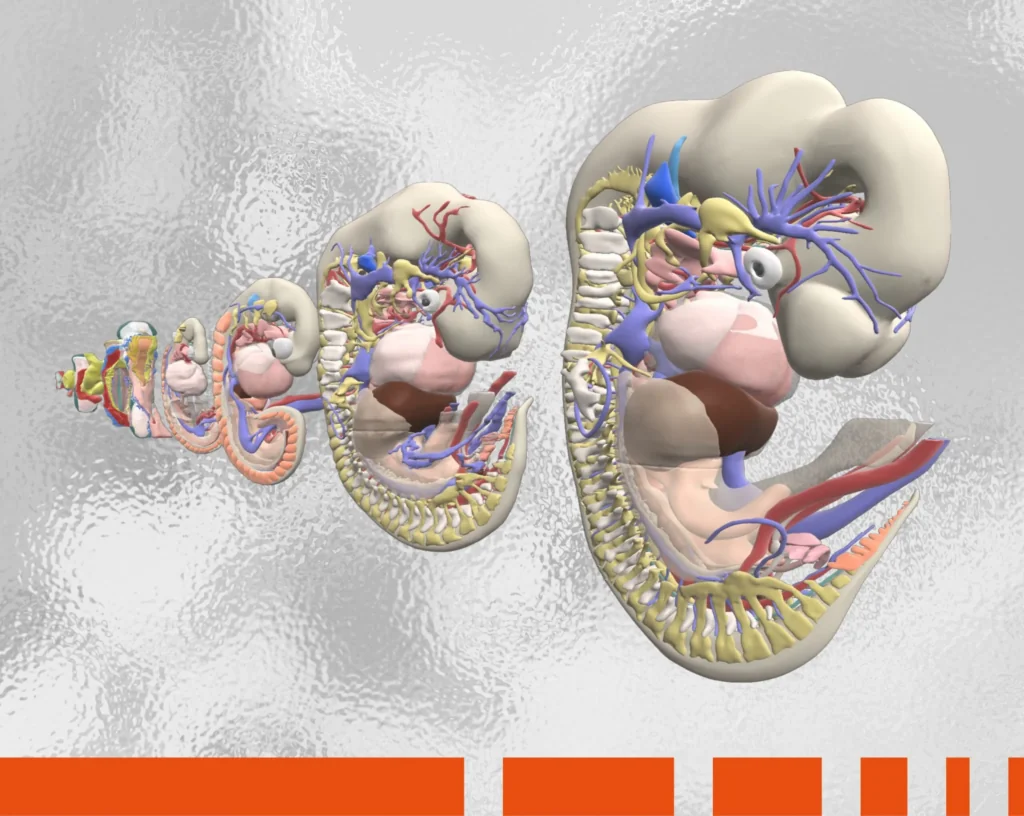Get ready to pucker up on July 6, as it’s International Kissing Day! It was the Romans who first brought socially acceptable kissing to Europe, breaking it down into three stages: a peck on the cheek (osculum), a loving kiss on the lips (basium) and finally, a passionate kiss on the mouth (savium). The day is celebrated to remind people of the simple pleasures of kissing, and it’s also a way to bring people closer together. When you are done smooching then read on as we will explore the anatomy of our lips as well as some fun facts.
The function of the lips
Apart from kissing, what do our lips do?
-
- Eating – Our lips push food into our mouth and keep it inside while we chew and swallow.
- Talking – When moving in different positions they create the sounds needed to form words.
- Breathing – The lips help us breathe by controlling airflow in and out of our mouth.
- Erogenous zone – A multitude of nerve endings makes the lips sensitive and also classifies them as an erogenous zone.
- Facial expression – Our lips help express our emotional state, for instance when smiling or frowning.
The anatomy of the lips
The skin of the lips is thin and contains three to five layers. Melanin, which is produced by melanocytes (pigment cells), give your lips their color but the level of melanin can vary between individuals. If a low level or no melanin is present, then the red blood vessels beneath the skin can be seen, giving the lips a red/pinkish color. However, if melanin is present, then its pigmentation can cover the shade of blood vessels, making it appear less pink and darker in color.
The labium superius oris, or upper lip, is commonly referred to as the cupid’s bow because it curves in and out at the top resembling an archer’s bow, while the lower lip is called the labium inferius oris. Surrounding the lips is the vermilion border, which is the border between the skin of your face and the skin of your lips. At the top of the upper lip is the philtrum, the vertical grove that extends from the top of your upper lip to the base of your nostrils. This is formed by dermal collagen and dense elastic tissue. The corners of your mouth, the oral commissure, is where the upper and lower lips join.
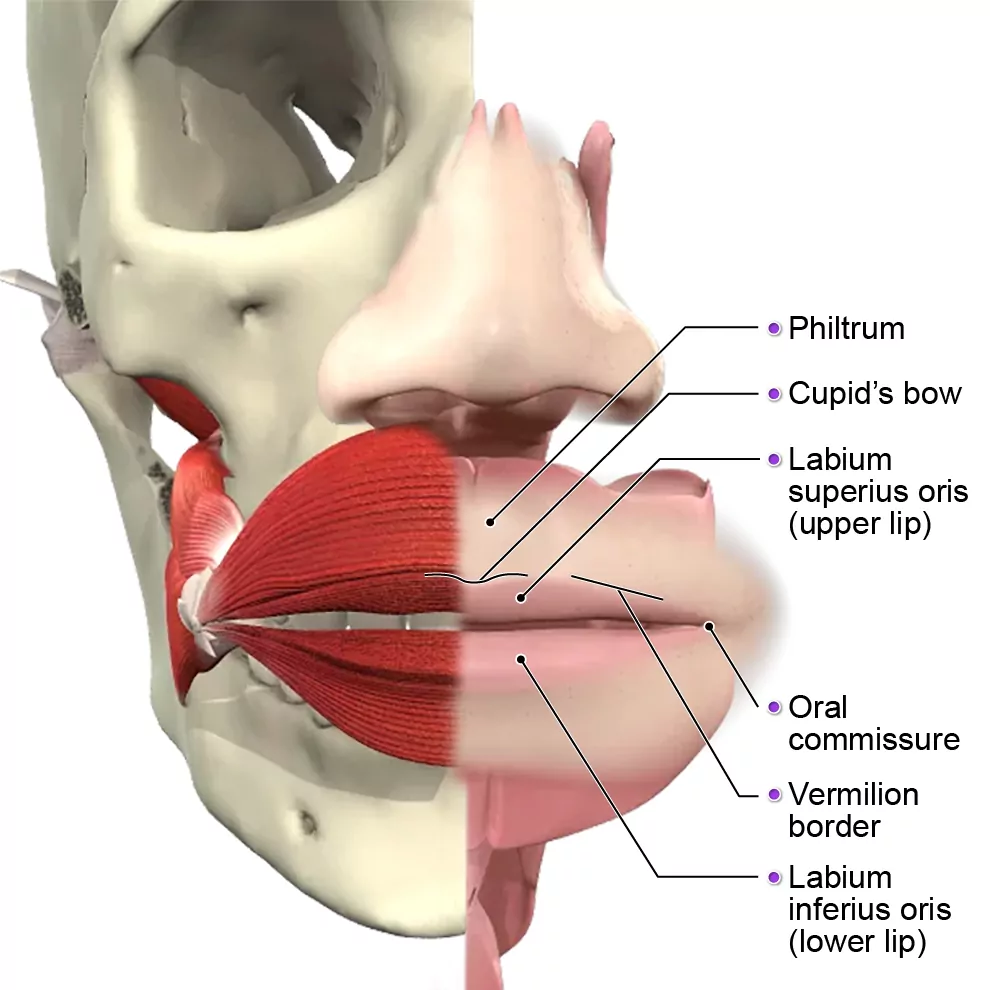
The muscles of the lips
The principal muscle of the lips is the orbicularis oris, which plays a critical role in actions, such as kissing or whistling. It consists of two parts – the pars marginalis and pars peripheralis – and is anchored to a focal point at each corner of the mouth called the modiolus.
The pars marginalis has a blunt, triangular profile when viewed from the side and forms the vermilion border. It changes its shape towards the modiolus to become inverted to enclose the pars peripheralis part of the muscle.
The pars peripheralis is the thicker, larger part of the orbicularis oris and has an ‘S-shape’ when viewed from the side. It becomes flatter towards the modiolus and gets enclosed by the pars marginalis part of the muscle.
Lastly, the modiolus is where different parts of the orbicularis oris muscle and other muscles meet that elevate, depress, retract and protract the lips.
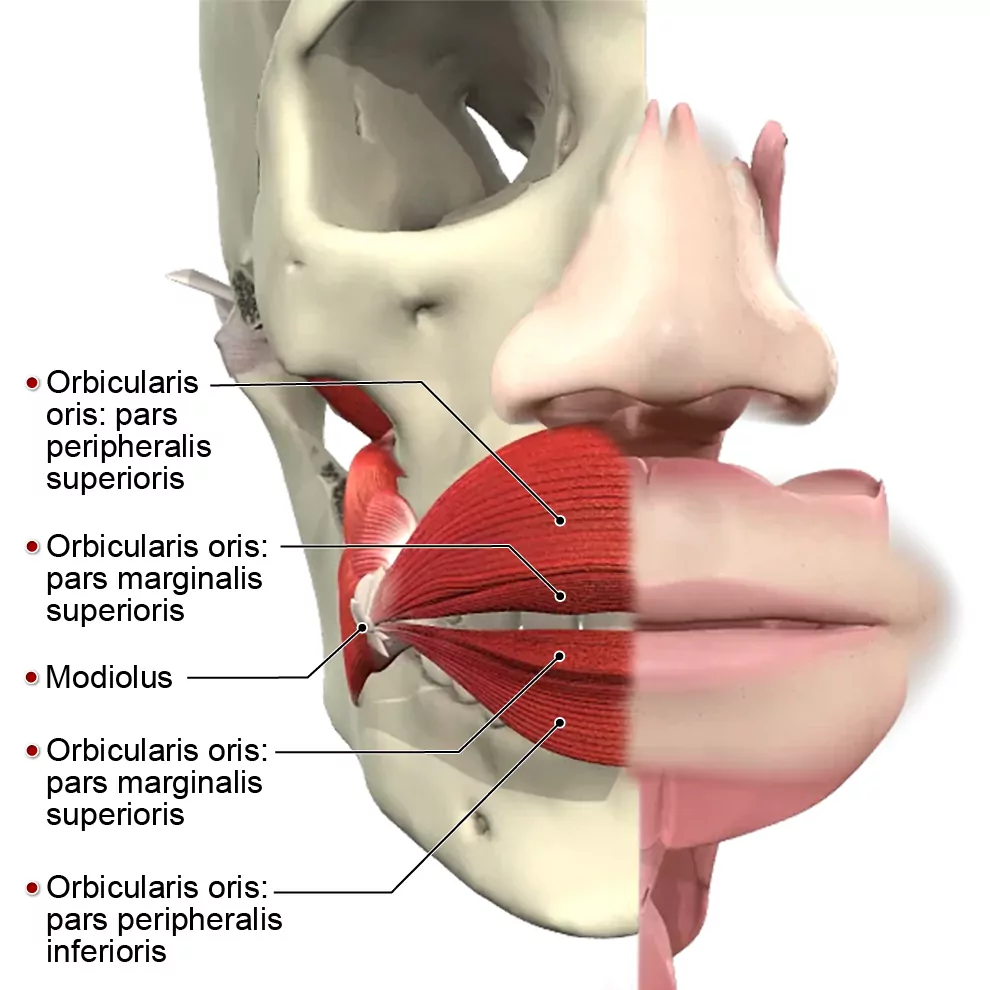
Nerve and blood supply of the lips
Different branches of the facial nerve supply various muscles around and of the lips, and one branch can innervate multiple muscles. The orbicularis oris muscles, which are the major muscles of the lips, are innervated by the buccal and marginal mandibular branches of the facial nerve.
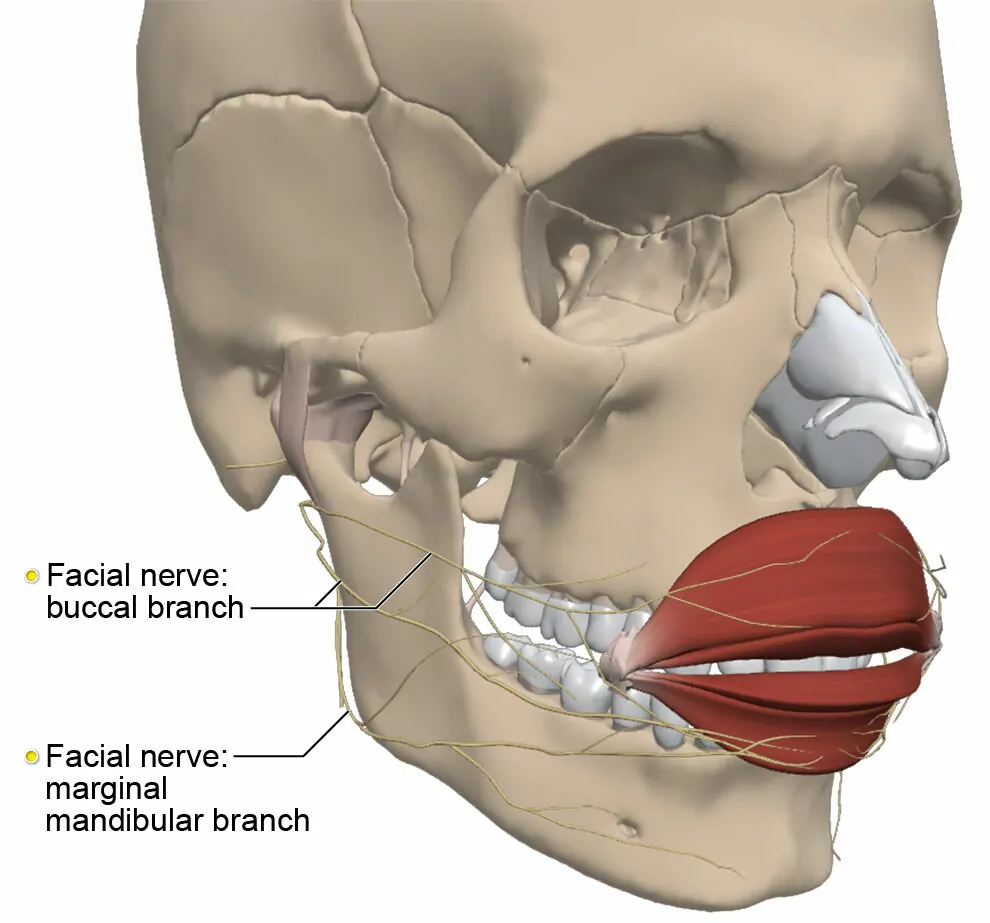
The main blood supply of the lips comes from the superior and inferior labial branches of the facial artery.
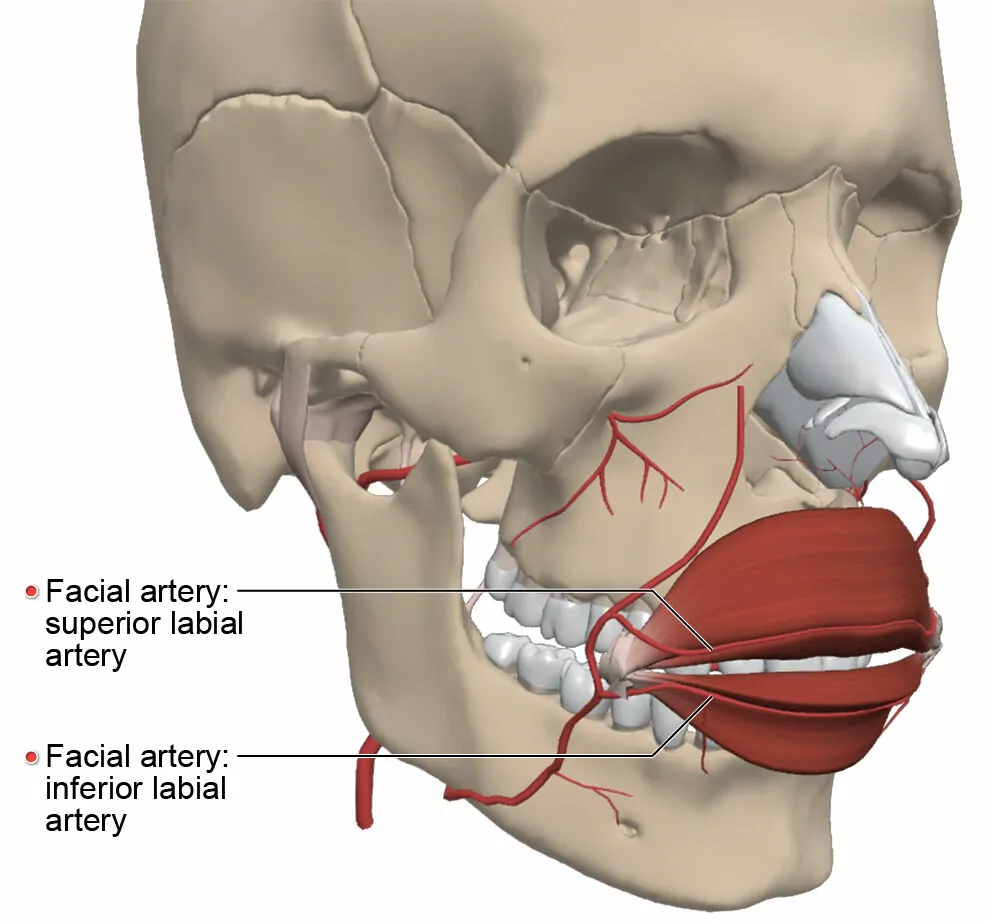
Fun facts about the lips
Before you start canoodling on International Kissing Day you could surprise your partner with these interesting facts about their lips:
-
- Each pair of lips is unique – Just like your fingerprints, our lips have their very own set of wrinkles and grooves that give your lips their distinct print. This study notes the similarity of lip prints between parents and children, which suggests lip print patterns are inherited, and could also constitute evidence if left at the scene of a crime.
- Lips are the most sensitive part of your body – With over 1 million nerve endings and sensitivity to hot and cold, your lips are the first line of defense in stopping harmful or extreme temperatures from entering your mouth. This also accounts for why babies put everything into their mouths, as the feel from their lips gives them more information than the other senses.
- Lips can’t sweat – Without sweat and oil glands lips can feel dry, so keep them hydrated by using a moisturizing lip balm and steer clear of products that may irritate.
- Lips get thinner as you age – Our lips get their shape from the collagen and elastin found in our skin. As we age, we produce less collagen and so our lips look thinner and less plump.
The images in this post are from from Primal’s 3D Real-time. To learn more about this or other Primal learning resources, please fill in the form here and our team will be in touch.
